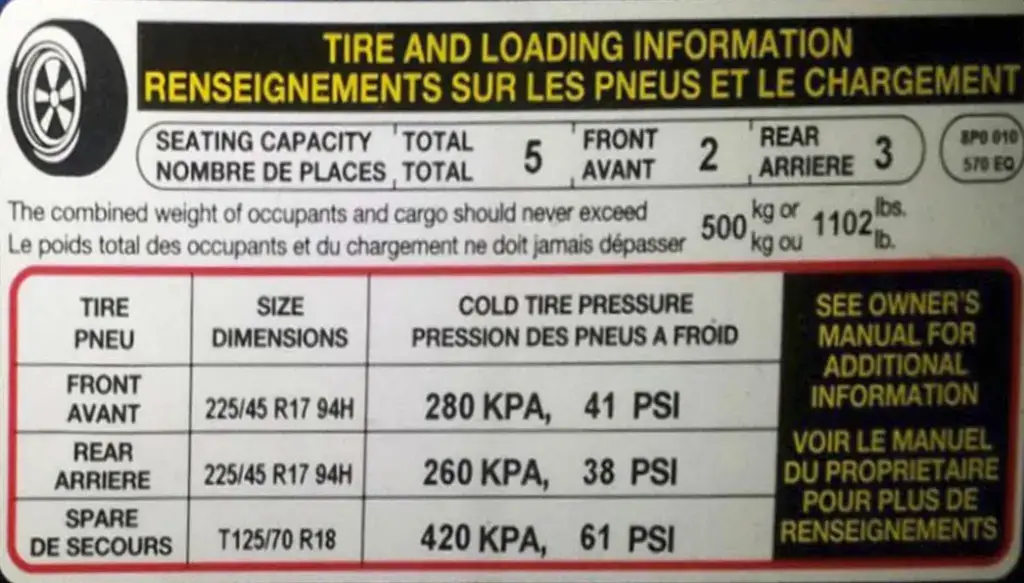Correct tire pressure for larger tires
The correct tire pressure for larger tires
The correct tire pressure for larger tires is often the same as the tire pressure listed on the driver’s door decal UNLESS the new tires have a different load rating.
The size of a tire doesn’t determine the amount of PSI it needs. Instead, it’s the weight of the vehicle and how much weight each tire can carry that determines how much PSI is needed. In other words, a bigger tire will have more air volume, but it doesn’t necessarily need more air pressure.
The recommended pressure listed on the label in the driver’s door area is designed to provide the optimal inflation pressure for the OE tires on any vehicle. This pressure will generally be higher than the minimum pressure required to support the maximum load on a given axle of the vehicle and lower than the tire’s
maximum inflation pressure rating so that there is some excess load capacity.
What is the load rating of the new larger tires?
A tire’s load rating tells you how many pounds a tire can safely carry. Let’s look at an example.
In this example, the tire’s load rating is 94. The 94 load rating translates into a load carrying capacity of 1,477 pounds (per tire). If you were going on a trip and you fully loaded your car, you’d want to make sure the weight of the vehicle plus the weight of the passengers and cargo doesn’t exceed 5908 pounds (1477 x 4).
For passenger tires the load rating is listed in letters like: Light Load (LL), Standard Load (SL), or Extra Load (XL). Extra Load tires of the same size will typically have the same load capacity at the same pressure as the Standard Load tire. However, they have added load capacity above certain pressures.
If you’re installing larger tires on your passenger vehicle and the load rating of the new tires is the same as the load rating listed on the placard, then use the same recommended tire pressure shown on the placard.
However, if the load rating of the new tires is different, use a tire pressure calculator. You can find one here.
© 2012 Rick Muscoplat
Posted on by Rick Muscoplat
